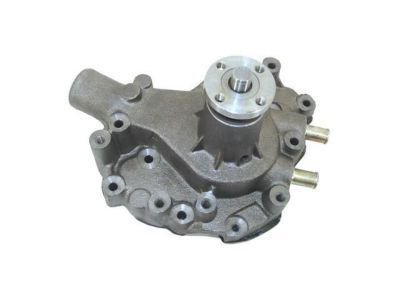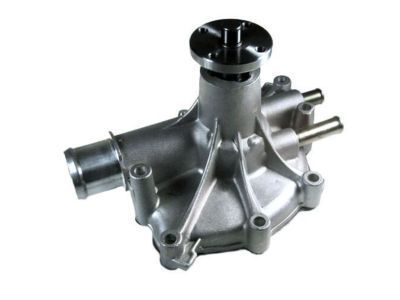×
- Live Chat
- 1-888-788-9341


My Garage
My Account
Cart
Genuine Lincoln Mark VII Water Pump
H2O Pump- Select Vehicle by Model
- Select Vehicle by VIN
Select Vehicle by Model
orMake
Model
Year
Select Vehicle by VIN
For the most accurate results, select vehicle by your VIN (Vehicle Identification Number).
3 Water Pumps found
Lincoln Mark VII Pump Assembly - Water
Part Number: F3ZZ-8501-B$55.78 MSRP: $90.36You Save: $34.58 (39%)Lincoln Mark VII Pump Assembly - Water
Part Number: FOZZ-8501-A$54.67 MSRP: $90.36You Save: $35.69 (40%)Ships in 1-2 Business Days
Lincoln Mark VII Water Pump
The Water Pump in Lincoln Mark VII autos is an essential device which pumps the water from the radiator to the engine and thus get heated to the Celsius point when combusting the fuel. Thus, most of the latest water pumps are comprised of aluminum with an incorporated shaft and an impeller to assist in the movement of the coolant. Signs of failure in the water pump include coolant leakage, noise from the bearings, and overheating of the engine. Multi owner engines have performance water pumps compatible with high-performance cooling systems with higher coolant flow and less power absorption. There is also an electric water pumps which has its benefits such as having it's own circulation of coolant and post shut down cooling.
We provide a wide range of Lincoln Mark VII Water Pump at the best prices possible. If you need Lincoln Mark VII Water Pump, you can shop with confidence on our website. All our OEM parts come with a manufacturer's warranty and are delivered to your door step with a fast delivery service.
Lincoln Mark VII Water Pump Parts Questions & Experts Answers
- Q: What are three ways to check the operation of a water pump while it's installed on the engine on Lincoln Mark VII?A: To check a water pump, warm up the engine and squeeze the upper radiator hose. A pressure surge indicates a working pump. Look for coolant leaks from the pump's weep hole, which suggest immediate replacement to avoid shaft bearing failure. Listen for noise from the pump during operation, as this also indicates bearing failure and need for replacement. Check for bearing wear by trying to move the pump pulley; any movement means the pump should be replaced.
- Q: How do you remove the water pump on Lincoln Mark VII?A: To remove the water pump, start by disconnecting the cable from the negative battery terminal and draining the cooling system with the engine cold. If the vehicle has a fan shroud and fan assembly, remove them. Take off the drivebelt(s) and the water pump pulley. On OHV engines with the power steering pump bracket retained at the water pump, remove the power steering pump and bracket assembly. If the engine has air conditioning, remove the idler pulley and bracket assembly. Remove any accessory brackets attached to the water pump. On OHV engines, detach the lower radiator hose, heater hose, and bypass hose from the water pump. Remove the water pump retaining bolts and take out the water pump. Before installation, ensure all gasket or sealant material is cleaned from the water pump, cylinder front cover, or cylinder block. Inspect the O-ring and sealing surface of the water pump housing in the block for dirt and debris on OHC engines. Position new gaskets on OHV engine water pumps and coat them with RTV sealant on both sides. Lubricate a new O-ring seal with clean antifreeze and install it on OHC engine water pumps. Transfer hose ports and fittings from the old pump if necessary for OHV engine water pumps. Install the water pump, making sure to replace the gaskets and plate on OHV engines. Tighten the bolts to the specified torque. Attach the radiator hose, heater hose, and bypass hose on OHV engines. Install the remaining components in the reverse order of removal. Fill the cooling system with the proper coolant mixture and start the engine to check for leaks, monitoring the level during the first few weeks of operation.








